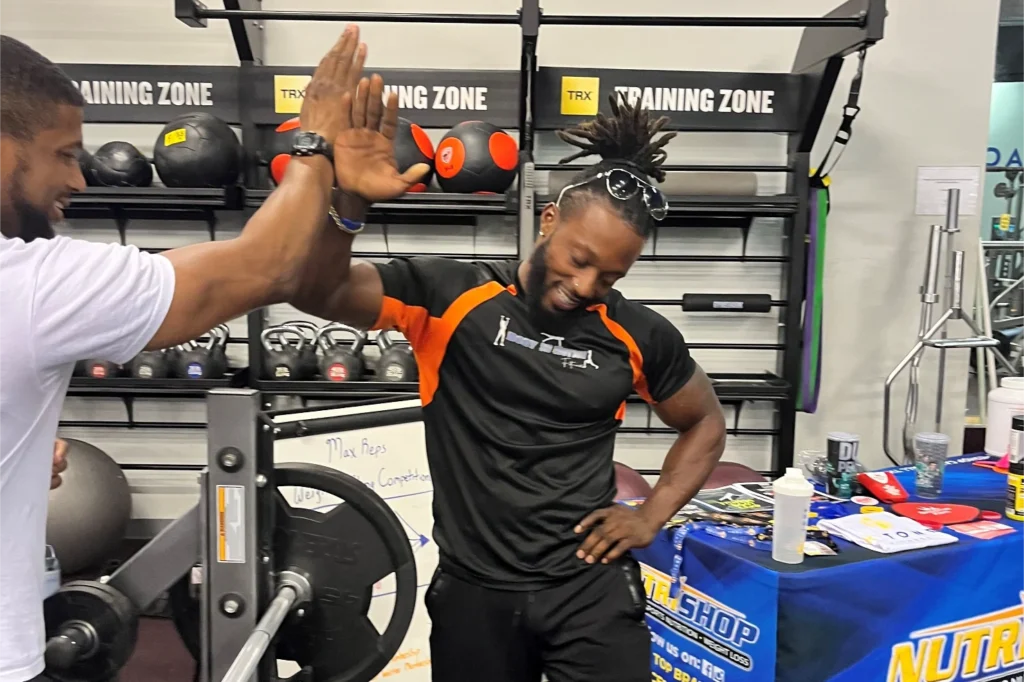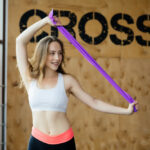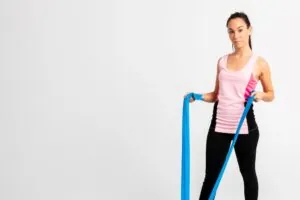This powerful exercise is a staple in strength and conditioning programs, offering a unique blend of muscle engagement, balance, and coordination challenges that can transform your workout regimen. Whether you’re looking to enhance your athletic performance, build strength, or simply switch up your fitness routine, mastering the kettlebell front squat is a smart move. Let’s dive into what makes this exercise so effective and how you can perform it with perfect form.
What is a kettlebell front squat?
The kettlebell front squat is a dynamic strength training exercise that targets multiple muscle groups simultaneously. By holding a kettlebell close to your chest and performing a squat, you engage not only your lower body but also your core, shoulders, and back. This exercise differs from traditional squats due to the positioning of the weight, which enhances the demand on your upper body and core stability, providing a comprehensive workout.
Benefits of kettlebell front squats
Kettlebell front squats are more than just a leg exercise; they offer numerous benefits that can improve your overall fitness:
- Increased core stability: The front hold position of the kettlebell engages your abdominal and lower back muscles more intensely than regular squats.
- Improved posture and mobility: Regular practice helps improve your posture and increases mobility in your hips and ankles.
- Enhanced coordination: Balancing the kettlebell in the front rack position requires and develops greater coordination and body awareness.
- Full body workout: It’s a compound exercise that works several muscle groups at once, offering a high-efficiency workout option.
- Versatility: Suitable for a range of fitness levels, it can be modified with different weights and variations to suit your needs.
Step-by-step technique
Achieving perfect form in the kettlebell front squat requires attention to detail. Follow these steps to ensure you’re on the right track:
- Starting position:
- Stand with your feet slightly wider than hip-width apart.
- Hold a kettlebell by the handles with both hands and bring it up to your chest. The kettlebell should rest comfortably against your chest and shoulders, with elbows pointing forward.
- The descent:
- Initiate the squat by pushing your hips back and bending your knees.
- Keep your back straight and chest upright to prevent the kettlebell from pulling you forward.
- Lower yourself until your thighs are at least parallel to the ground, ensuring your knees do not bow inward.
- The ascent:
- Drive through your heels to push upward, maintaining your weight evenly distributed across your feet.
- As you rise, keep the kettlebell stable and your core engaged.
- Finish the movement by returning to your starting position, ready for the next repetition.
Common mistakes and how to avoid them
Perfecting the kettlebell front squat can be challenging, and common mistakes can hinder your progress and risk injury. Here’s how to correct them:
- Rounding the back: This usually happens when the kettlebell is too heavy or when fatigue sets in. Focus on keeping your chest lifted and core engaged to protect your spine.
- Knees caving in: Weak hip abductors can cause your knees to cave inward. Work on strengthening these muscles and always push your knees outward as you descend.
- Improper weight distribution: Leaning too far forward or back can disrupt your balance. Keep your weight centered over your feet, and don’t let your heels come off the ground.
- Going too heavy too soon: Start with a weight that allows you to maintain proper form and gradually increase as you become more comfortable with the exercise.
Advanced variations you can try
Once you’ve mastered the basic kettlebell front squat, you might be looking for ways to challenge yourself further. Here are some advanced variations that can add complexity and intensity to your workout:
- Single arm kettlebell front squat:
- This variation increases the demand on your core and unilateral strength. Hold a kettlebell in one hand at shoulder level, with the elbow bent and the kettlebell resting against the forearm. Perform the squat while maintaining balance and keeping your torso as upright as possible. Switch arms with each set to promote balanced strength development.
- Double kettlebell front squat:
- For those who find one kettlebell no longer challenging, using two can significantly increase the intensity. Hold a kettlebell in each hand, bringing them to the front rack position. The additional weight not only increases strength demands but also stability and balance as you manage two separate weights.
- Kettlebell front squat to press:
- After rising from the squat, add an overhead press to the movement. This not only works the legs and core but also integrates the shoulders and arms, creating a full-body workout. Ensure your form is perfect in the squat before adding the press to avoid injury.
- Kettlebell front squat with a pause:
- Introduce a pause at the bottom of the squat for 2-3 seconds before ascending. This pause eliminates the elastic energy stored in your muscles and increases the difficulty by requiring a stronger and more controlled lift.
If you need more ideas on how to make your workout challenging, get in touch with our personal trainers in Sanford.
Final thoughts
The kettlebell front squat is a versatile and effective exercise that targets the major muscle groups, enhances core stability, and improves overall strength and conditioning. Whether you’re a beginner or an advanced athlete, incorporating this exercise into your routine can offer significant benefits. By starting with the fundamentals and progressively advancing to more challenging variations, you ensure continual growth and development in your fitness journey. And since mixing weight lifting and aerobic exercises is beneficial in many ways, learn how good stationary bike is for cardio.







